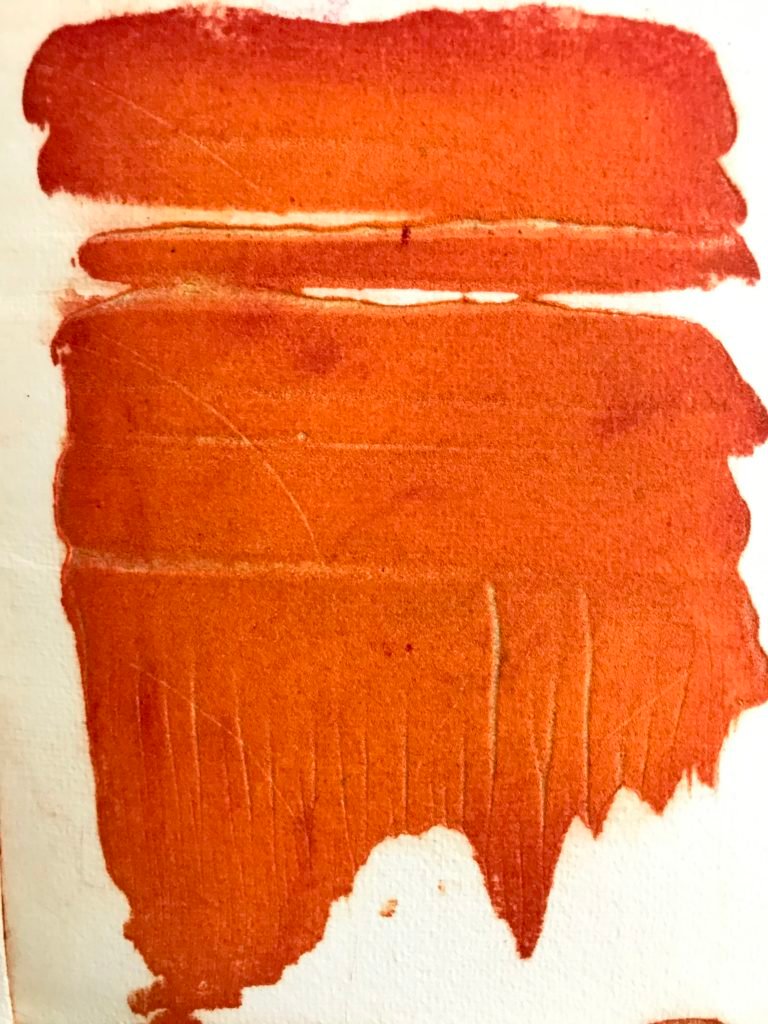
Around mid 2019, before the start of this Fellowship, I began thinking about future directions my practice. These thoughts were around the fundamental nature of the practice and involved asking myself a series of questions. These questions came directly out of the processes involved in the practice, and eventually crystallised into a series of questions:
– apart from the print, what other end products are possible?
– what scope might there be in developing post-print projects?
– how can I escape the restrictions of the press size?
– when is a print finished?
– can a traditional 2D print become a 3D object – a sculpture?
– could the ‘making’ process in printmaking provide new opportunities?
Recent investigations have looked at ways of ‘escaping the frame’ – freeing the print from the restriction of the traditional picture frame. As the nature of my collagraph printmaking has often featured texture through deep embossing of the paper, it has appeared to me contradictory to nullify that texture by placing the print behind glass, thereby putting a further barrier between the viewer and the work.
One purely practical way of escaping the frame has involved coating the surface of the printed paper with a protective lacquer or varnish and monitoring its appearance over several months for signs of fading or discolouration. The test was successful, but I am actively looking for other coatings that are not harmful to the environment.
Other attempts at addressing the questions above have led to some exciting and intriguing experiments into plate substrates, the materials on the plates and eventually on to post-print paper folding as one way of producing an object that, whilst emanating from the printmaking process, lives beyond and, to some extent, outside it (Flexures: Three Dimensions from Two). As I write this, I have just thought of an intruiging extension of this area of study. It could be very interesting to try heavily creasing paper shapes as before, but rather than unfolding them, printing and then re-folding, I might simply print on the folded paper straight away. After printing, some of the folds may naturally spring up away from the surface below, creating interesting shadows and depth between the layers.
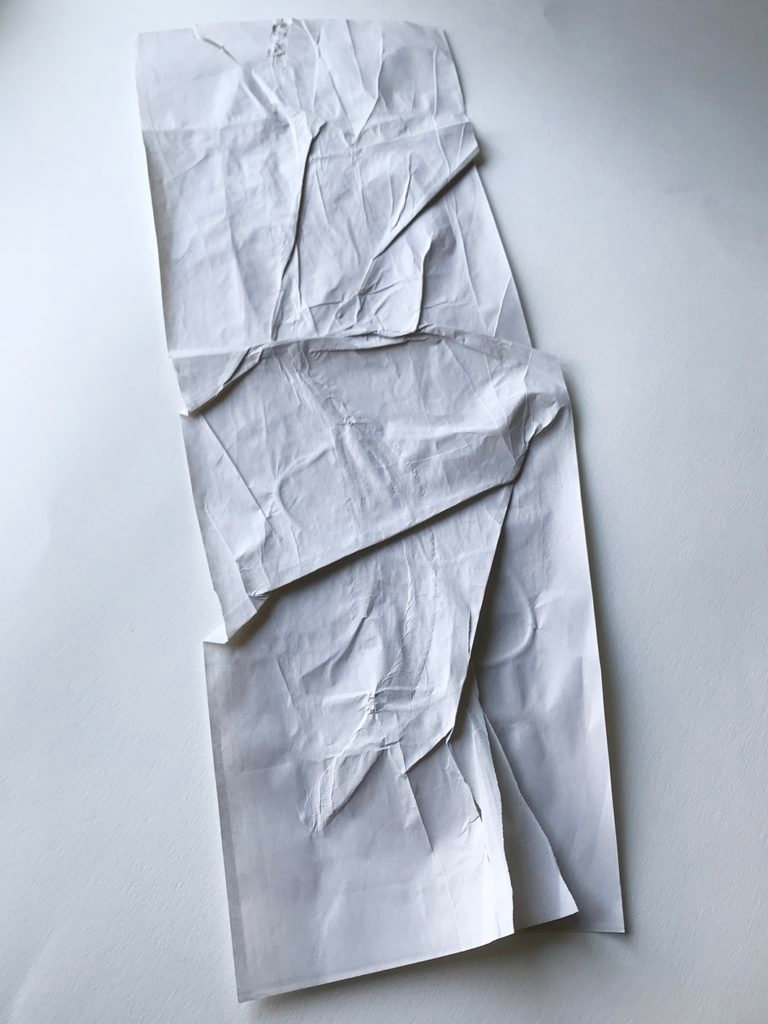
Perhaps equally as exciting has been the emergence this month of an unexpected new process outcome – partially transparent plates. The substrate for the plates is thick, clear acetate (around 400 microns), to which carborundum paint has been applied. Free, abstract marks are then made with and on the paste, using fingers, plastic or metal tools or pieces of card. When dried and hardened, the plate is ready for inking – it does not need to be sealed. A few weeks ago I made 15-20 of these plates, but set them aside for a while to concentrate on other projects. Two days ago, having inked the first three plates, I turned them over to clean the backs of each one and noticed how the ink colour appeared more intense and more dynamic for being partially obscured where the carborundum paint had been applied. Additionally, light was being reflected and transmitted by the smooth surface, adding a surreal quality to the marks.
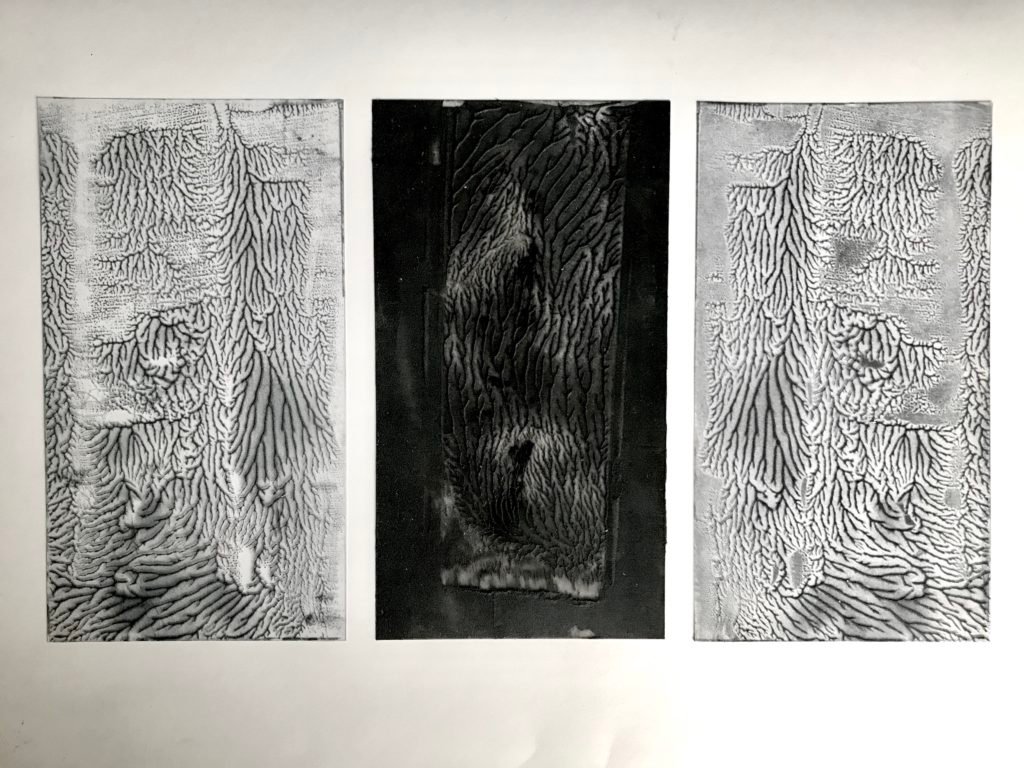
Above: an acetate plate with carborundum paint, before inking

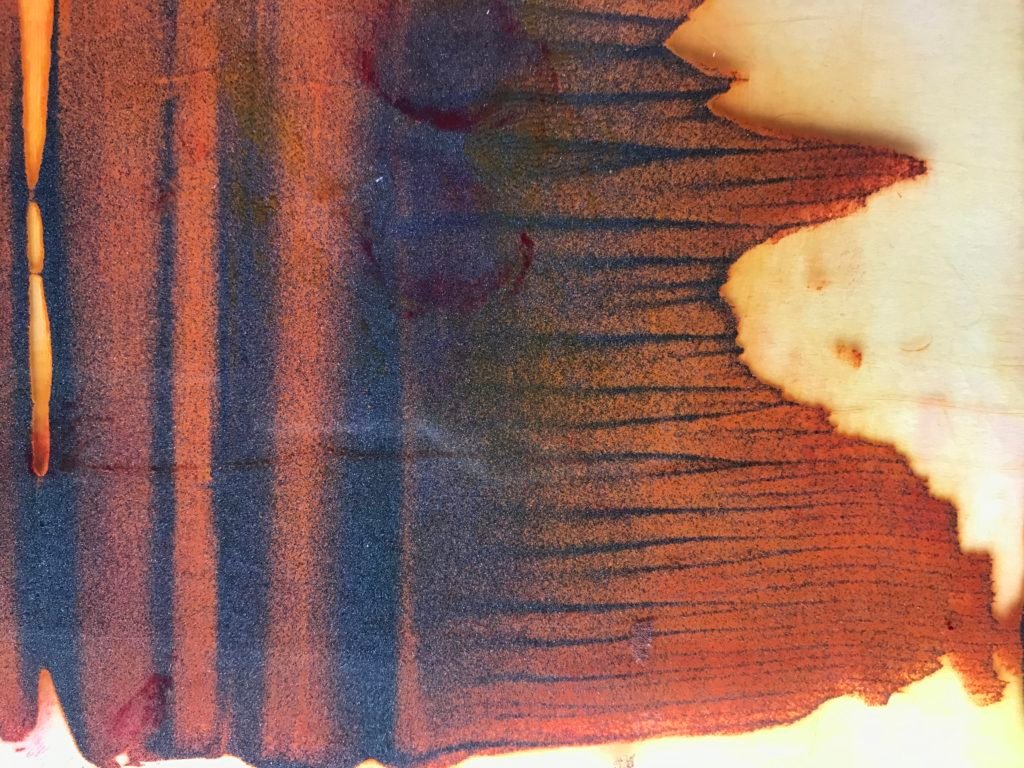
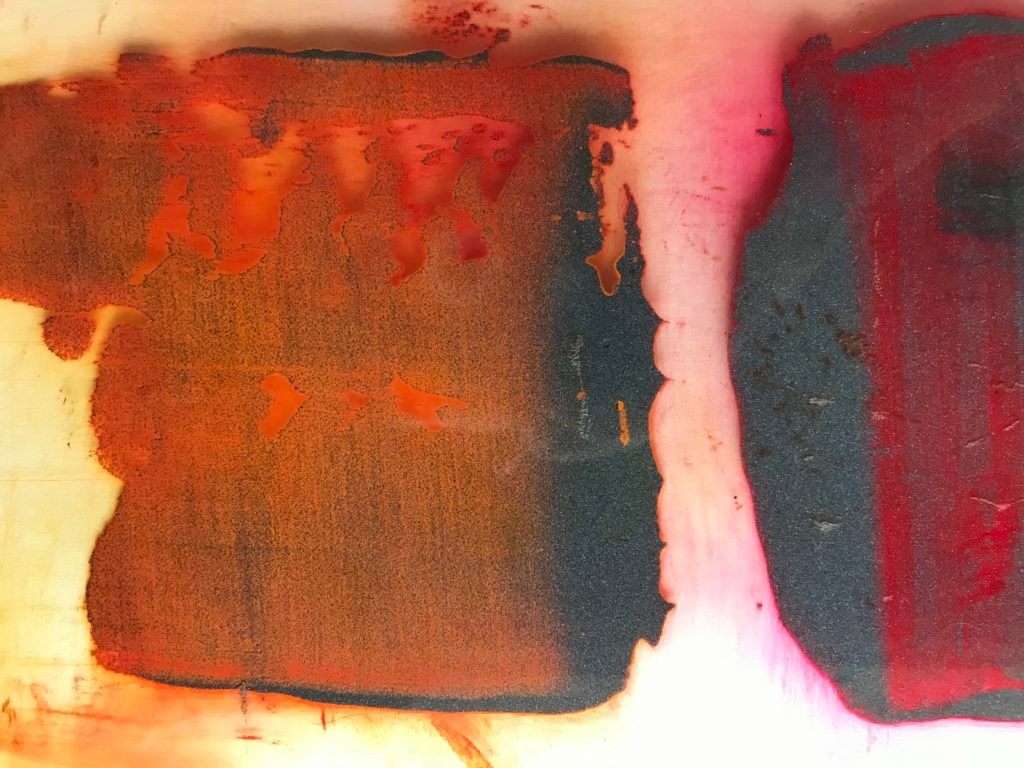
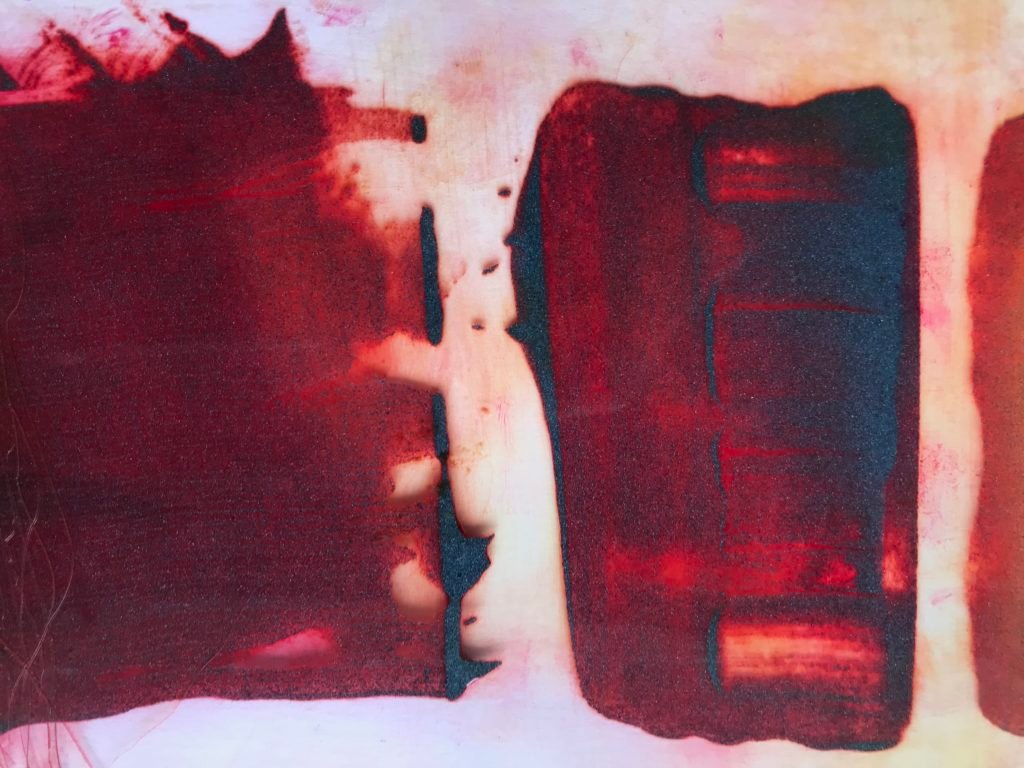
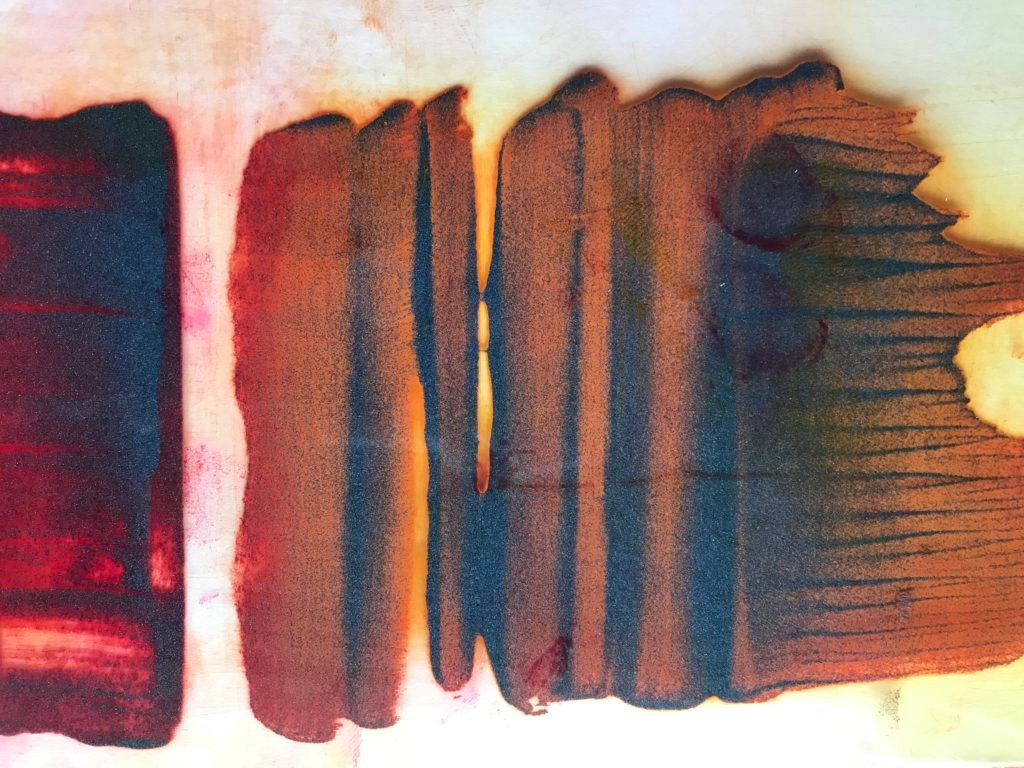
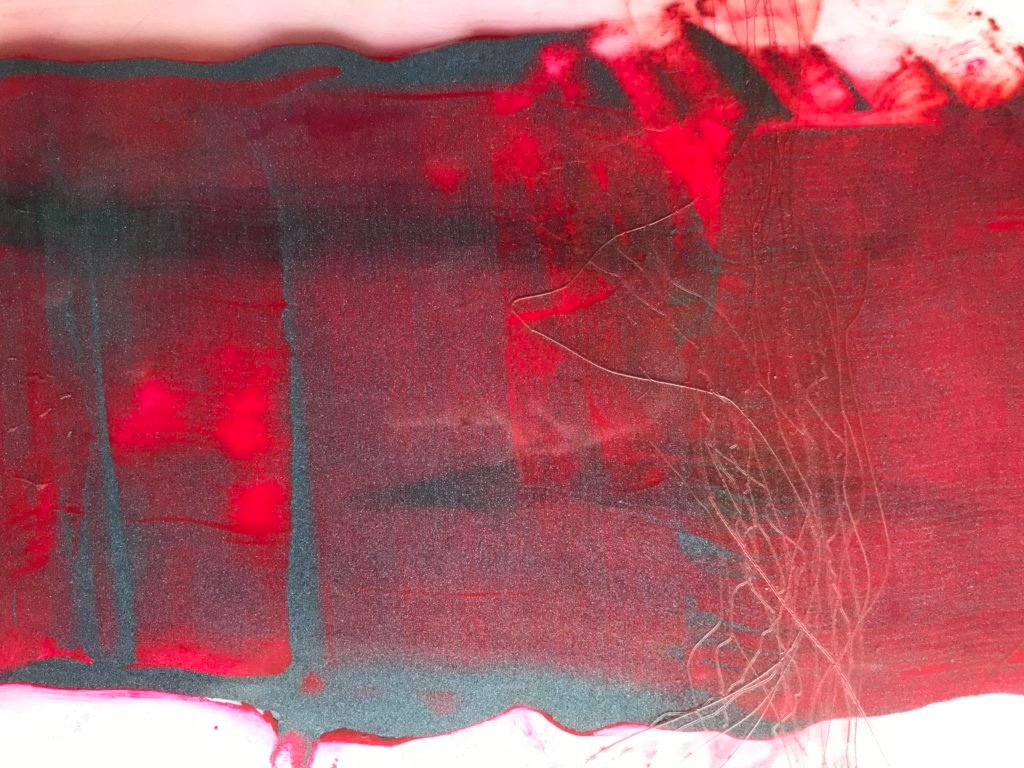
Above: reverse side of pre-inked semi-transparent plates
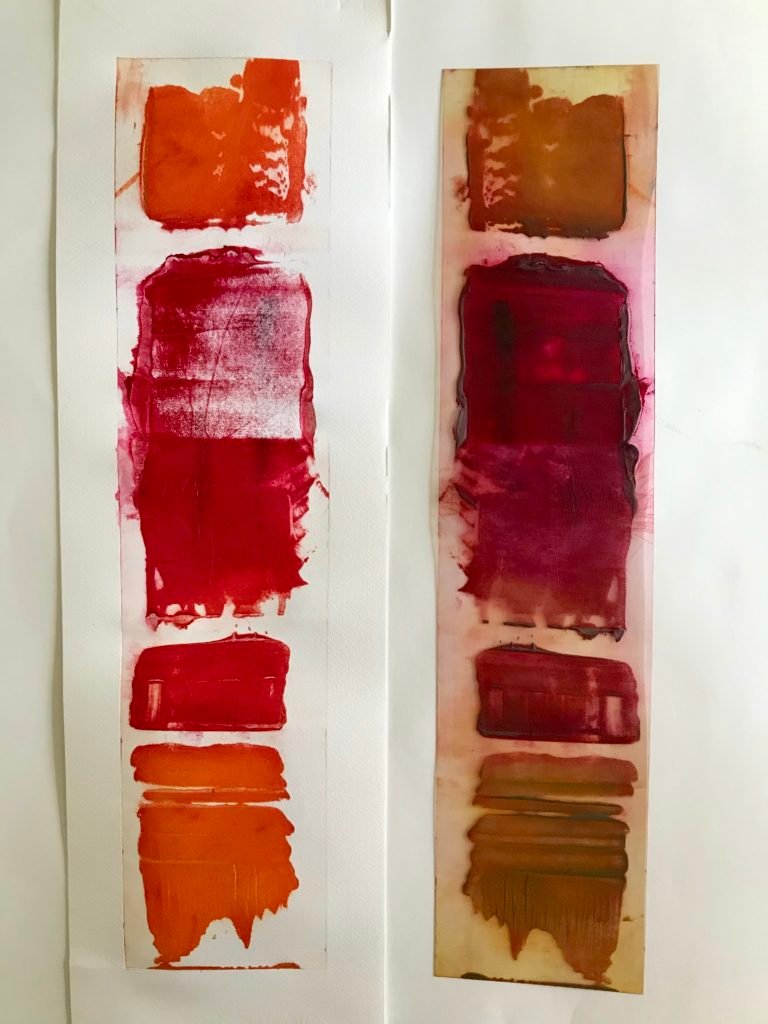
Above: print and plate
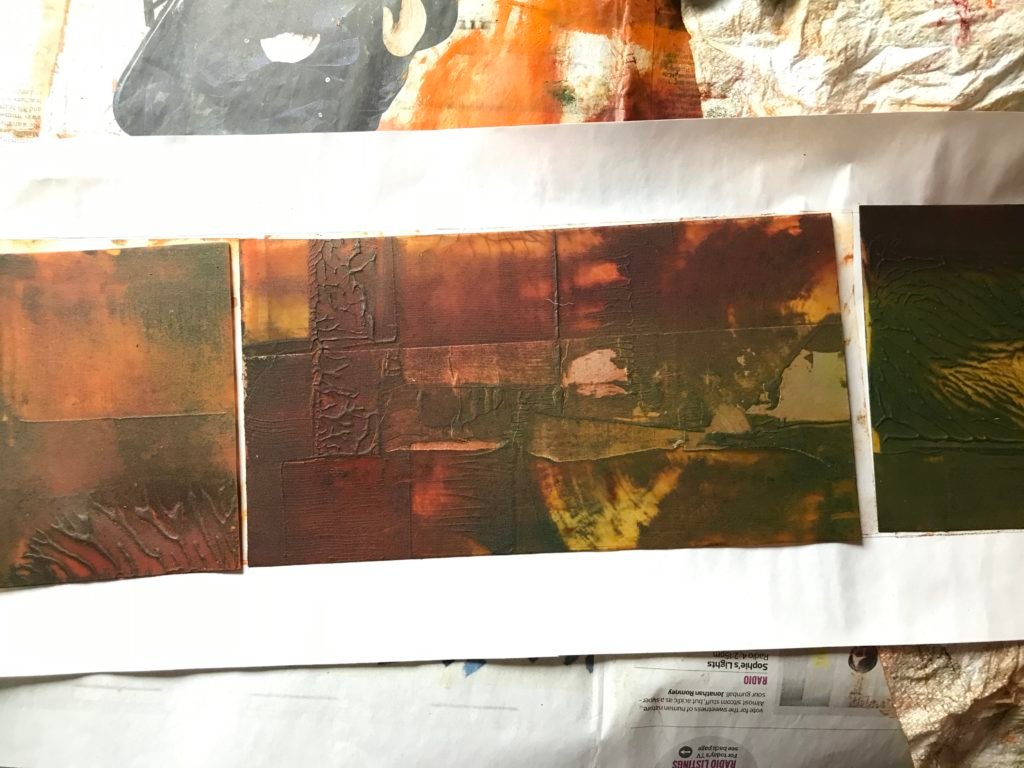
Above: more inked plates, after printing
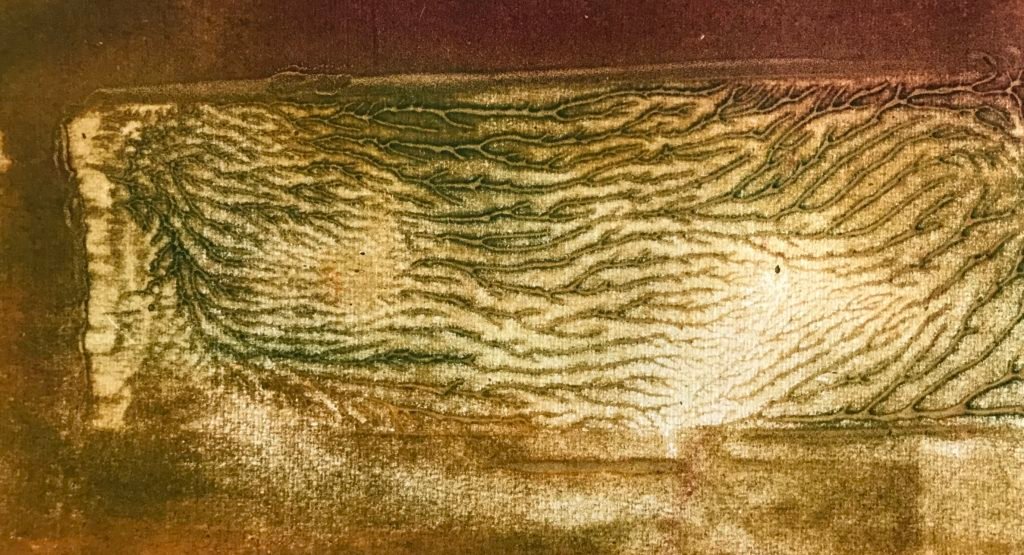
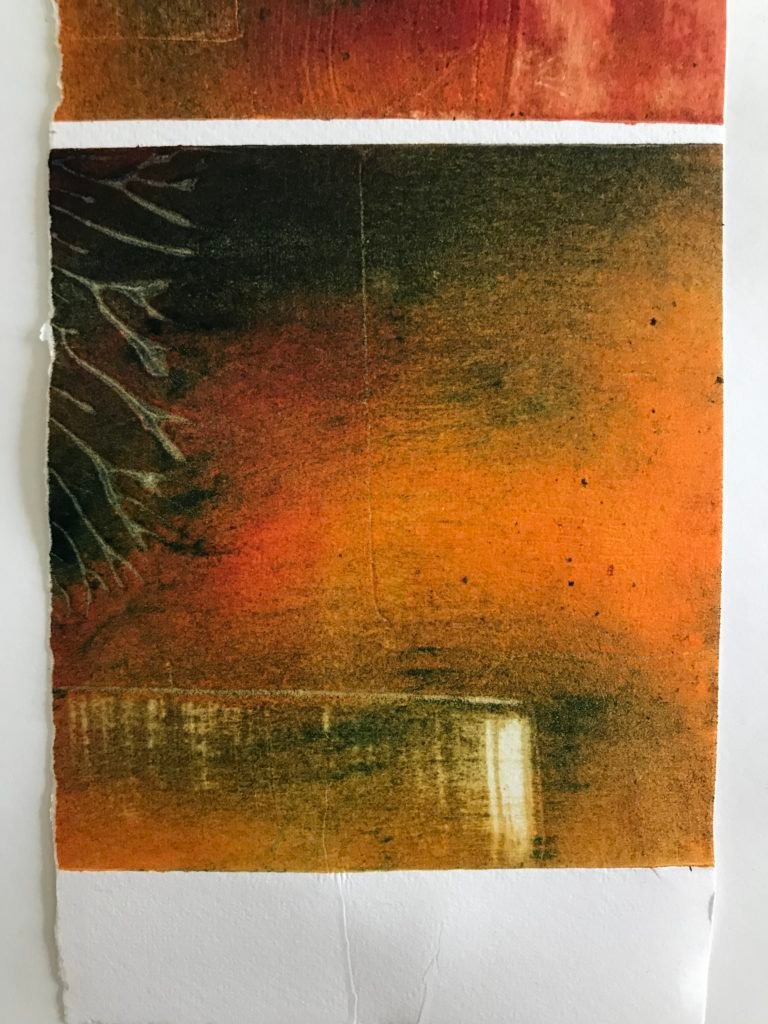
Above: resulting prints
So, the process that hitherto led to a predictable outcome – the print – now resulted in the creation of a different work, at an earlier stage in that creative process. It called into question my expectations of that process. Most positively, it answered a couple of the questions: my working process could indeed provide new opportunities, and, confirmed that and demonstrated the print was not the only possible (or desirable) outcome.
Intriguingly, this process of ‘research through practice’ may also lead to a rethink of at least one of my two exhibitions planned for 2021. One of those shows was set to follow a traditional format, with a series of framed prints behind glass. I am now imaging that this show might feature Flexures (folded prints), acetate plates housed in lightboxes or suspended from a ceiling, alongside a smaller selection of unframed prints, plus traditionally framed prints and associated plates behind glass.
What next? Initially, I need to spend some time investigating the potential of each of these pathways and look for others. Also, I must continue to follow my processes, taking note of what happens along the way and be prepared to stop, investigate and develop anything interesting that occurs.
